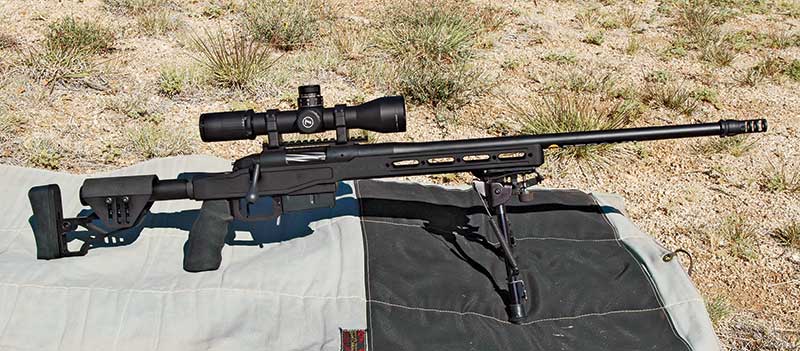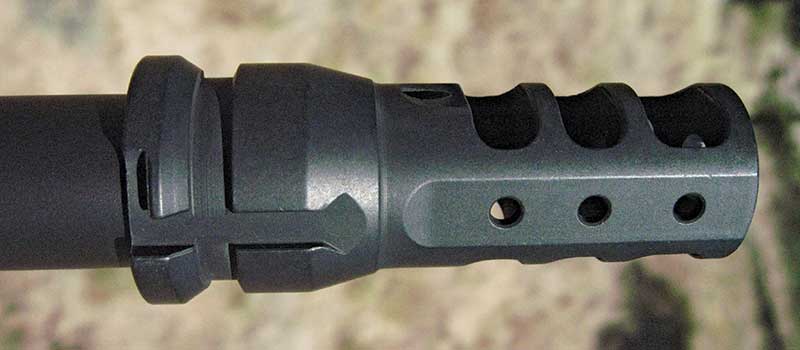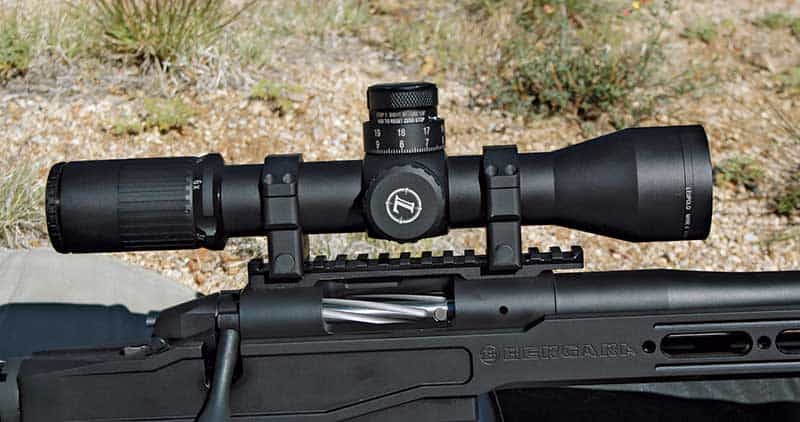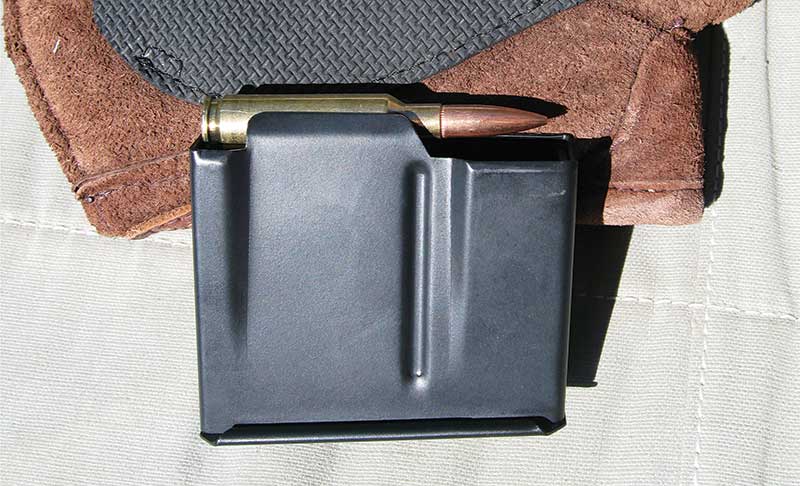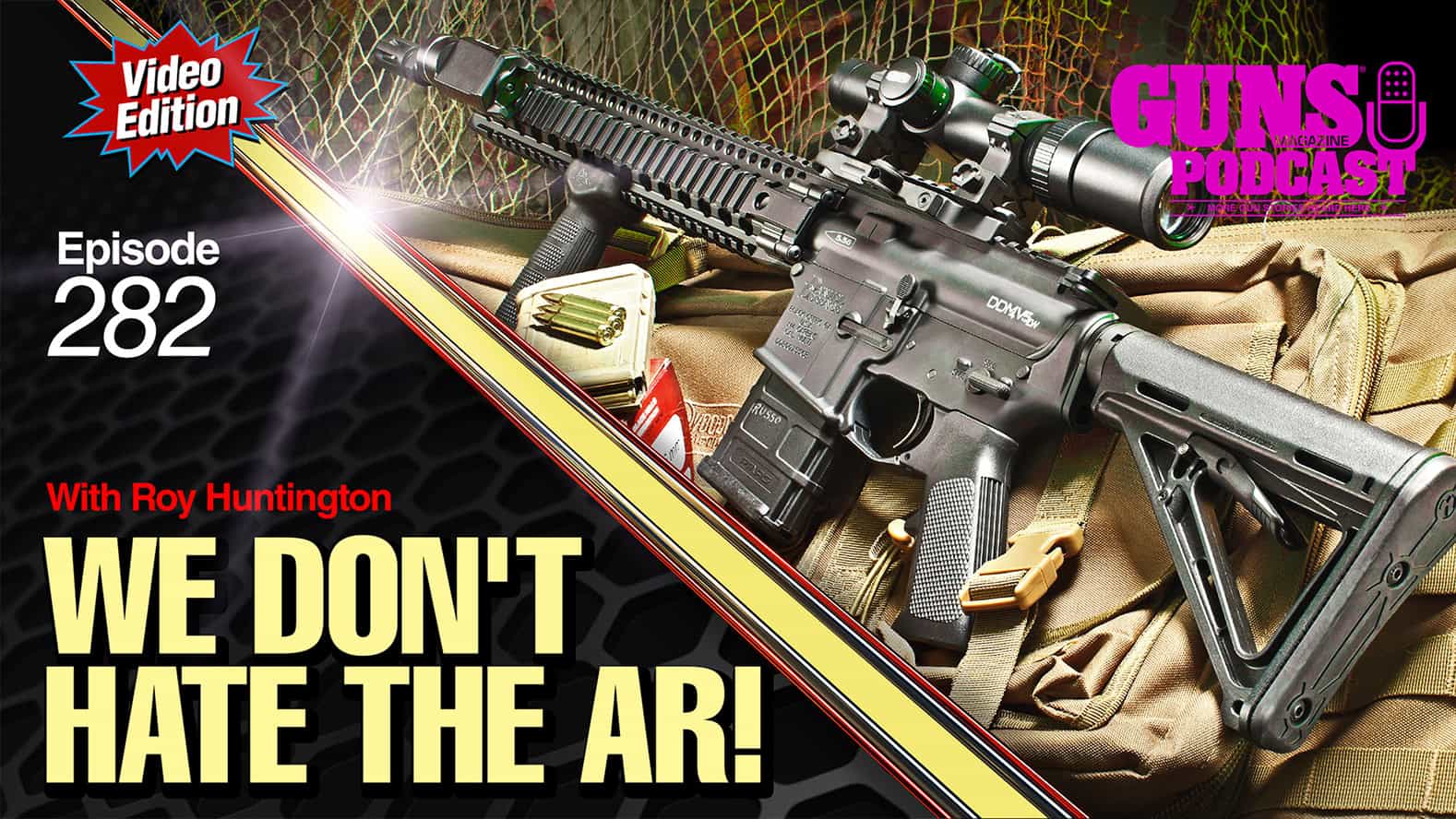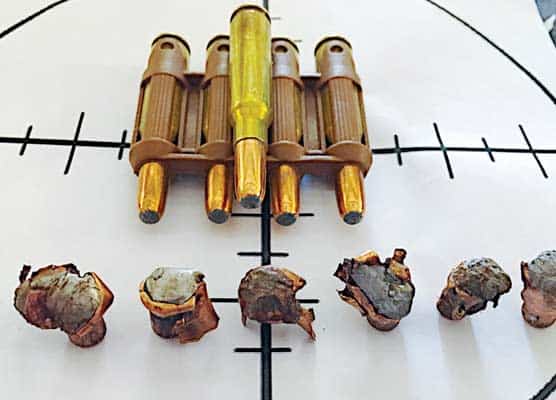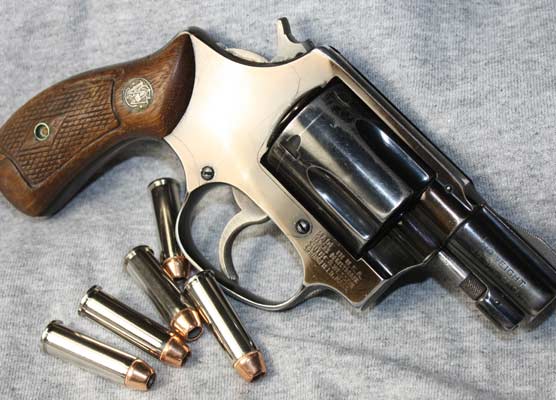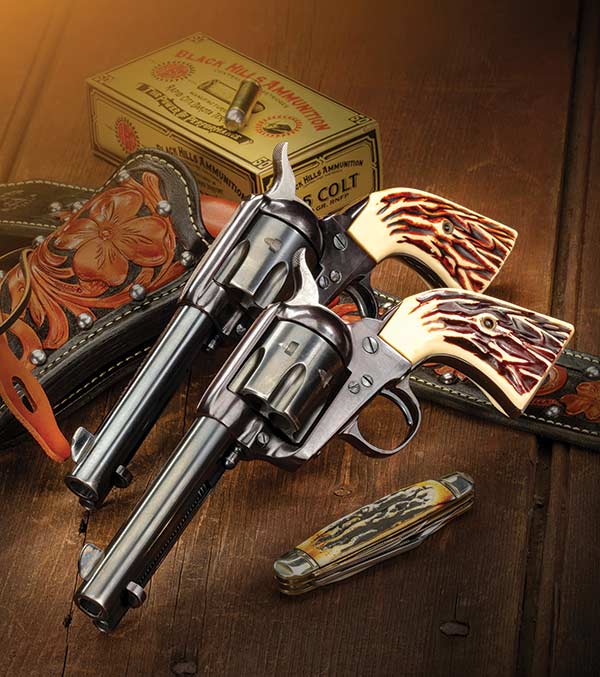Long Range Comes Of Age
Bergara’s new LRP is an entry-level
rifle for a new precision shooting game
There’s a new shooting game in town, and it’s creating quite a stir. Precision Rifle matches (with winners taking home cash or valuable merchandise prizes) are springing up across the country under the organizational auspices of the Precision Rifle Series. In my lifetime, the popularity of today’s Precision Rifle matches reminds me very much of the beginning and growth of the metallic silhouette game in the ’60’s and ’70’s. It’s entertaining.
It’s casual and beginner friendly. It doesn’t take a basketful of money to get started. It’s contemporary in a tactical and techie sort of way, and firearm makers are fielding some super accurate, entry-level match rifles for shooters who would like to try their hand at the game. One of those firearm’s makers is Bergara USA, and they just stepped up to the plate with their Premier Series LRP (Long Range Precision) model, with guaranteed sub-minute-of-angle accuracy from factory ammunition. We were invited to wring it out
Shilen Connection
The Bergara story itself is interesting because recently Bergara barrels have earned a sterling reputation for exceptional accuracy at nominal cost. You might not be a muzzleloader, but you’ve probably come across the CVA (Connecticut Valley Arms) muzzleloading label at some point. To produce its muzzleloaders, CVA setup its production base in Spain, not Italy. CVA is owned by BPI (Black Powder Industries), which also owns Dead Air Armament silencers, PowerBelt Muzzleloading Bullets and several other companies.
After having some troubles with sub-contractors, BPI decided to bring barrel production in-house, hiring well-know match-grade barrel maker Ed Shilen to make it happen. The result is a state-of-the-art barrel making facility in Bergara, Spain, which currently produces barrels for BPI as well as a number of other well-known firearm firms.
As the muzzleloading market slowed down, BPI decided to branch out into the hunter, tactical and competition centerfire world, making not only barrels but actions and complete rifles too. The result is Georgia-based Bergara USA under the leadership of retired USMC advanced weapons specialist Dan Hanus.
Bergara USA currently offers four tactical/long-range precision rifle models, ranging in price from $2,190 to $3,900 and higher. The BCR 28 Competition and the BCR 30 Heavy Tactical models are at the upper price range, both models offer all the advanced bells and whistles a serious shooter could desire and can be customized exactly to the shooter’s needs. The more affordable models are the stock Premier Series LRP (Long Range Precision) rifle at $2,190 and the LRP Elite at $2,640—the difference being the Elite features a slightly different style chassis (stock) with a quick adjustable Magpul PRS buttstock.
Both the LRP and LRP Elite are offered in three popular long-range match cartridges: 6mm Creedmoor, 6.5 Creedmoor and the .308 Win. All four Bergara models are guaranteed to deliver sub-MOA accuracy with factory match ammunition and arrive with a 100-yard test target to prove it.
Caliber Choice
While the 6mm Creedmoor is currently the darling cartridge of the long-range precision rifle shooters, we requested a Premier Series LRP in 6.5 Creedmoor because we have had a lot of field time with the cartridge and knew what to expect in terms of performance in the brutal temperatures, wind and mirage conditions of an Arizona summer.
The 6.5 Creedmoor cartridge was developed by Hornady as a highly accurate, short-action, target cartridge, generating modest recoil with those long, sleek, 6.5mm target bullets blessed with high ballistic coefficients. The Creedmoor is based on Hornady’s .30 T/C case, which is a shortened and improved .308 Win case. It offers increased powder volume and more flexibility when adjusting bullet-to-throat fit while still maintaining the cartridge’s overall length as a short-action round.
Unpacking the Premier Series LRP, you begin to pick up on some of the neat features about the model. Since the action is made in Georgia by Bergara and basically follows the lines of a Remington 700 action, Model 700 aftermarket accessories like target triggers slip right in. The action is factory fitted with Timney’s 517 flat trigger. The action is also supplied with a 20 MOA Picatinny top rail and feeds from either a 5- or 10-shot AICS detachable magazine.
The Bergara fluted bolt was a real surprise. Like the Savage centerfire bolt, the Bergara’s floating bolt head perfectly conforms to the base of the chambered cartridge. Savage has always claimed this interface between the case head and the bolt face enhanced accuracy.
The Bergara bolt head also features the gas-blocking baffles seen on the Savage bolt. As the locking lugs engage their respective seats, the non-rotating baffles seal off the inner raceways, blocking any gas racing along those channels. The right side of the locking and gas baffle lugs are slotted and serve as bolt guides by engaging the right rail. These clever design touches enhance accuracy and safety at a modest cost. My hunch is Savage makes the Bergara bolt.
The action is fitted with No. 5 contour barrel equivalent to a lightweight varmint profile; it’s 22 inches long in 6.5 Creedmoor and rifled with a 1:8-inch twist. The muzzle is fitted with BPI’s Dead Air Armament Key Lock combination muzzlebrake and suppressor mount, which makes mounting and removing a Dead Air brand silencer fast and easy.
Its aluminum chassis (stock) is a Bergara-branded Element chassis made by XLR industries, featuring an AR-15 style grip, an adjustable length-of-pull (12-15-inches) and adjustable cheekpiece; its recoil pad can be canted to conform to the shooter in any position. Unfortunately, the stock adjustments are not tool-less so you better be packing an Allen wrench.
The chassis features numerous threaded holes to accommodate accessories, optical enhancements, especially short Picatinny rails on the butt and forearm for mounting monopods and quick detachable bipods. Frankly, I was surprised those small, essential rails were not factory fitted.
In short, the Premier Series LRP’s basic package is a nicely put together, and it came with a 100-yard, 3-shot, factory test target, measuring 0.372 inch.
On a Precision Rifle, I like a trigger pull-weight of no more than 2.5 pounds. The factory Timney trigger came in at 3.5 so I popped the stock and lowered the weight to just over 2 pounds.
The owner’s manual states the guard screws are factory torqued to 55 inch-pounds so out came my Batten-feld Technologies’ “Fat Torque Wrench,” offered under their ‘Wheeler Engineering” label and adjustable from 10 to 60 inch-pounds. It belongs in every tool kit.
After lubricating the bolt, it was off to the range with both Hornady and Nosler 140-grain match ammunition.
Bergara’s test rifle came mounted with Leupold’s eye-popping, Mark 6 3-18x44mm front focal plane scope calibrated in mils. It’s a superb optic, and it’s gratifying to see US scope manufacturers finally offering front focal plane optics in which the reticle values are constant throughout the variable power range.
In Precision Rifle matches, targets can be set up for distances ranging from 10 to 1,000+ yards with the emphasis being on longer-range targets. The targets typically run 1 to 3 MOA in size, averaging 2 MOA, and a competitive rifle and shooter should be able to hold sub-MOA to be competitive.
The 0.372-inch factory test target already proved the Bergara LRP was a sub-MOA rifle or better with factory ammunition. I didn’t match that factory grouping, but I’ll blame it on the mirage and shifty wind of the Arizona summer desert. With both the Hornady and the Nosler match ammunition, my 3-shot groups at 100 yards ranged between 0.52 and 0.64 inches and at 200 yards, between 1.09 to 1.4 inches. The Hornady ammunition delivered a slight edge in accuracy. Average velocities were 2,559 fps for the Nosler and 2,683 fps with the Hornady. Standard deviations for both brands were in the single digits, proving just how outstanding factory ammunition can be these days. As promised, the Bergara Premier Series LRP is certainly a sub-MOA platform.
Precision Rifle competition is one of the most intriguing developments in the shooting world in decades. All you need to start is a good, basic precision rifle chambered for one of the many 6mm and 6.5mm match cartridges, a quality target/tactical scope and a good rangefinder.
Premier Series LRP
MAKER: Bergara USA
ACTION TYPE: Bolt-action repeater, CALIBER: 6mm Creedmoor, 6.5 Creedmoor (tested), .308 Win. CAPACITY: 5 or 10 (detachable magazine), BARREL LENGTH: 20 or 24 inches, OVERALL LENGTH: 43 inches, WEIGHT: 9.8 pounds, FINISH: Matte black, SIGHTS: None, 20 MOA Picatinny rail installed, STOCK: XLR Element Chassis, Price: $2,190
Mark 6 3-18x44mm
Maker: Leupold & Stevens
Magnification: 3X to 18X, Objective Diameter: 44mm, Eye Relief: 3.8 inches (3X), 3.9 (18X), Internal Adj. Range: 90 MOA elevation, 50 MOA windage at 100 yards, Click Value: 1/10 mil, Tube Diameter: 34mm, Weight: 23.6 ounces, Overall Length: 11.9 inches, Reticles: Tactical Milling, Price: $2,859.99
